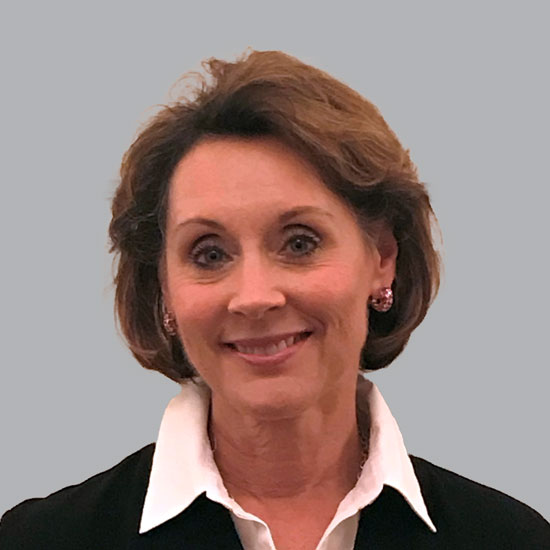Enterprise CRM for Higher Education: Part 1 - Architecture
Former Analyst

While most institutions have invested in at least one departmental CRM solution, higher education is seeing a growing trend of institutions taking a more holistic approach and deploying CRM applications across enterprises. This movement is gaining momentum as the demand for higher education to optimize its relationships and engagement with its constituents continues to increase, and as institutions begin to see the value of a consistent user experience and gain value from common organizational efficiencies.
As institutions adopt an enterprise-wide approach, they are being challenged to think critically about how to configure CRM systems to meet the diverse needs of each business unit. Institutions are moving away from traditional email marketing campaigns toward more personalized subscriber-centric strategies that embody constituent interests, likes, and preferred engagement methods. Unlike ERP and student deployments, which tend to have fixed implementation processes and timelines, institutions are taking a different approach to deploying enterprise CRM (ECRM) applications. As such, institutions are frequently using a phased and iterative deployment strategy that starts with the most critical use case(s) and allows institutions to experience a rapid time to value.
The three major ECRM solutions being adopted across higher education, in order of market share, are Salesforce, Microsoft Dynamics 365, and SugarCRM. While each of these CRM solutions supports similar functionality (Marketing, Service, Sales, Community), they support a different architecture, go-to-market and partner strategy, and community of adopters.
While leading ECRM solutions are relatively similar from a purely functional standpoint, there are unique differentiators, such as the underlying architecture, go-to-market and partner strategy, the community of adopters, and available vendor partner solutions that may make one solution more desirable. This is part one of a three-part series that takes a more in-depth look at each of these ECRM differentiators.
A Look at Architecture
Salesforce
Salesforce applications are deployed using a multi-tenancy architecture designed and operated by Salesforce. User applications are stored in Salesforce Orgs comprised of provisioned resources that contain data and metadata supporting one or more applications. Institutions can choose to deploy Salesforce applications and data in one or multiple orgs. Choosing an org strategy is highly influenced by several factors, including the sharing of constituents, data, and business processes across Salesforce applications, the use of productized vendor applications, and de-centralized versus centralized Salesforce support staff. Salesforce has a strong commitment to higher education and offers its community-driven Education Data Architecture (EDA), which delivers an optimized data model for education clients and application partners. The underlying Salesforce technology architecture includes Oracle RDBMS, Java, JSP, XML, JSON, Lightning, web services, and more.
Microsoft Dynamics 365
Microsoft Dynamics 365 leverages a single, unified cloud architecture built on top of the Microsoft Azure technology stack, which includes the Azure data platform, Azure Active Directory, Power Platform, LinkedIn, and Microsoft 365 productivity tools. Dynamics 365 is embedded in the Microsoft product stack and can natively integrate with other products and applications in the stack. Since the Dynamics 365 CRM partner applications layer on top of the Microsoft stack, as the company innovates new technology and functionality, its partners can readily take advantage of these enhancements.
Key components of Microsoft’s solution suite for higher education include its Common Data Model, Common Data Services, and the Higher Education Data Accelerator, which are all components of the Microsoft Azure technology stack. Microsoft’s Common Data Model contains shared and consistent metadata definitions for standard education entities and allows application partners to build applications using a common data model. The Microsoft Common Data Model is supported via the Microsoft Common Data Services, which provides a common SQL Server database across Microsoft partner applications. The Microsoft Higher Education Accelerator is an education-specific data model that layers on top of Common Data Services and defines the base data model for partner applications, as well as a common model for third-party applications and integrations within the higher education ecosystem.
SugarCRM
SugarCRM supports a cloud-native, microservices architecture that is engineered in and deploys on AWS. SugarCRM is an AWS Advanced Technology Partner, and AWS is a strategic building block of its CRM platform. The SugarCRM technology stack is built on open standards, such as PHP (LAMP), Apache, HTML5, JavaScript, NoSQL/RDBMS, and RESTful APIs, and it leverages MySQL and Microsoft SQL Server database technology. SugarCRM uniquely offers a time-aware and predictive customer experience (CX) platform that leverages embedded AI technology to discover actionable insights and deliver predictive insights and “next best action” guidance on SugarCRM data, external data, and client interactions.
Take Note of Different Data Models and Cloud Deployment
In summary, one of the most significant architectural differences in these leading higher education ECRM solutions is the data model and how it is used across applications. While Salesforce EDA provides a higher-education specific data model that most applications partners support, the data model is not shared across application vendors. However, Salesforce offers thousands of integrations to other Salesforce and third-party applications. Likewise, SugarCRM applications typically do not leverage the same data model and communicate across vendor applications via the company’s plethora of connectors. With Microsoft Dynamics 365 CRM, all Microsoft’s products share the same data model and can utilize, learn, and integrate with data across all Microsoft products. While Salesforce and SugarCRM integrate with several Microsoft applications, the native connections available in Microsoft Dynamics 365 CRM may be highly advantageous to some institutions. Institutions that are committed to the Microsoft versus Java technology stack find this feature particularly attractive.
Another differentiator is how each ECRM solution deploys in the cloud. Salesforce was built from the group up to operate as a SaaS-based cloud application. Similarly, SugarCRM has been rearchitected as a cloud-native ECRM solution. While Microsoft Dynamics 365 CRM is designed to deploy in the cloud on Azure, some of the modules are also supported via on-premises and hybrid configurations with limited functionality. While leading ECRM solutions are relatively similar from a purely functional standpoint, there are unique differentiators, such as the underlying architecture, go-to-market and partner strategy, the community of adopters, and available vendor partner solutions that may make one solution more desirable.
Detailed research on the enterprise CRM category and Microsoft Dynamics 365 CRM, Salesforce CRM, and SugarCRM can be found in the Tambellini member portal.
Categories
Share Article:

Other Posts From this Author:
© Copyright 2025, The Tambellini Group. All Rights Reserved.